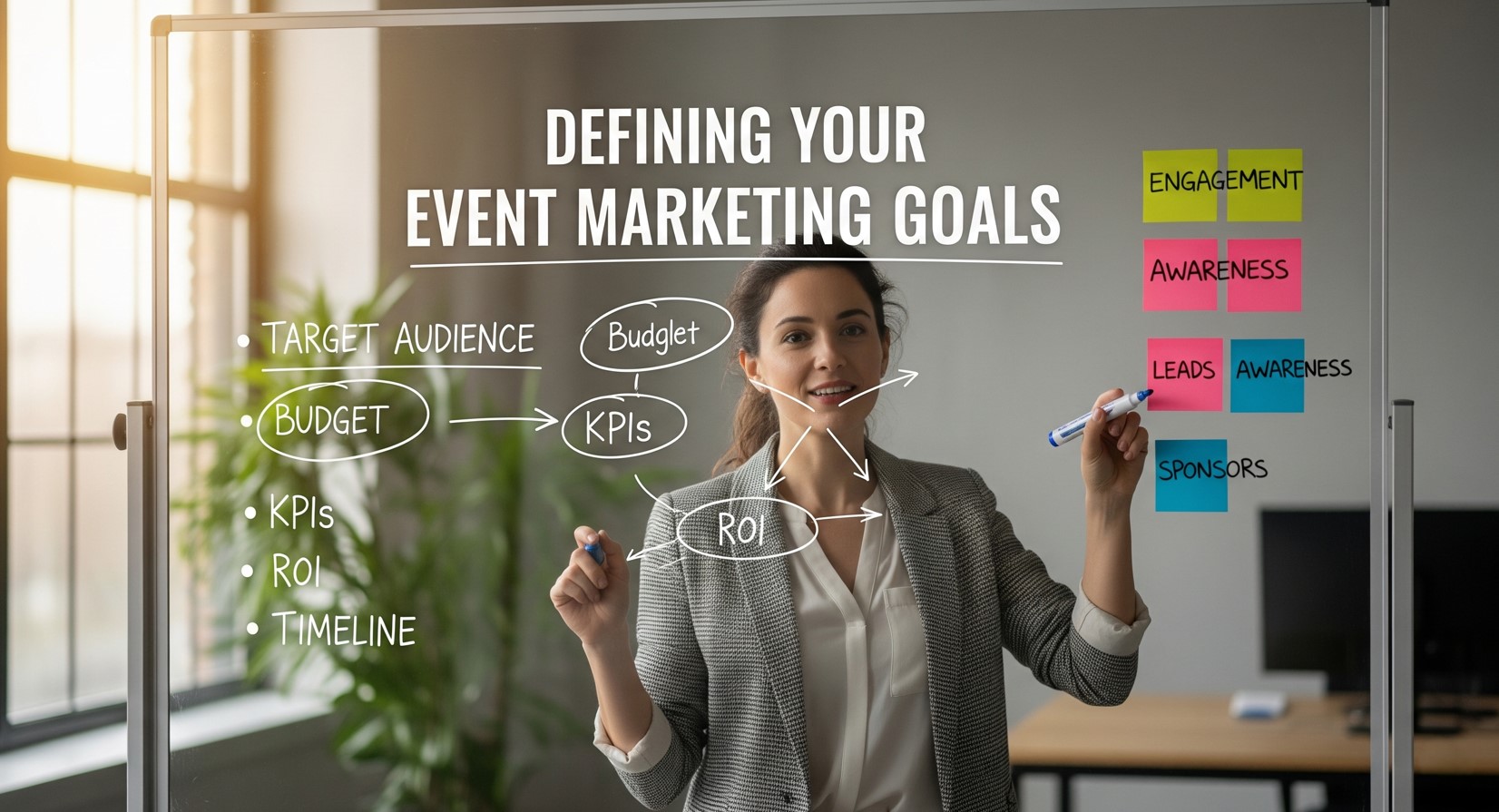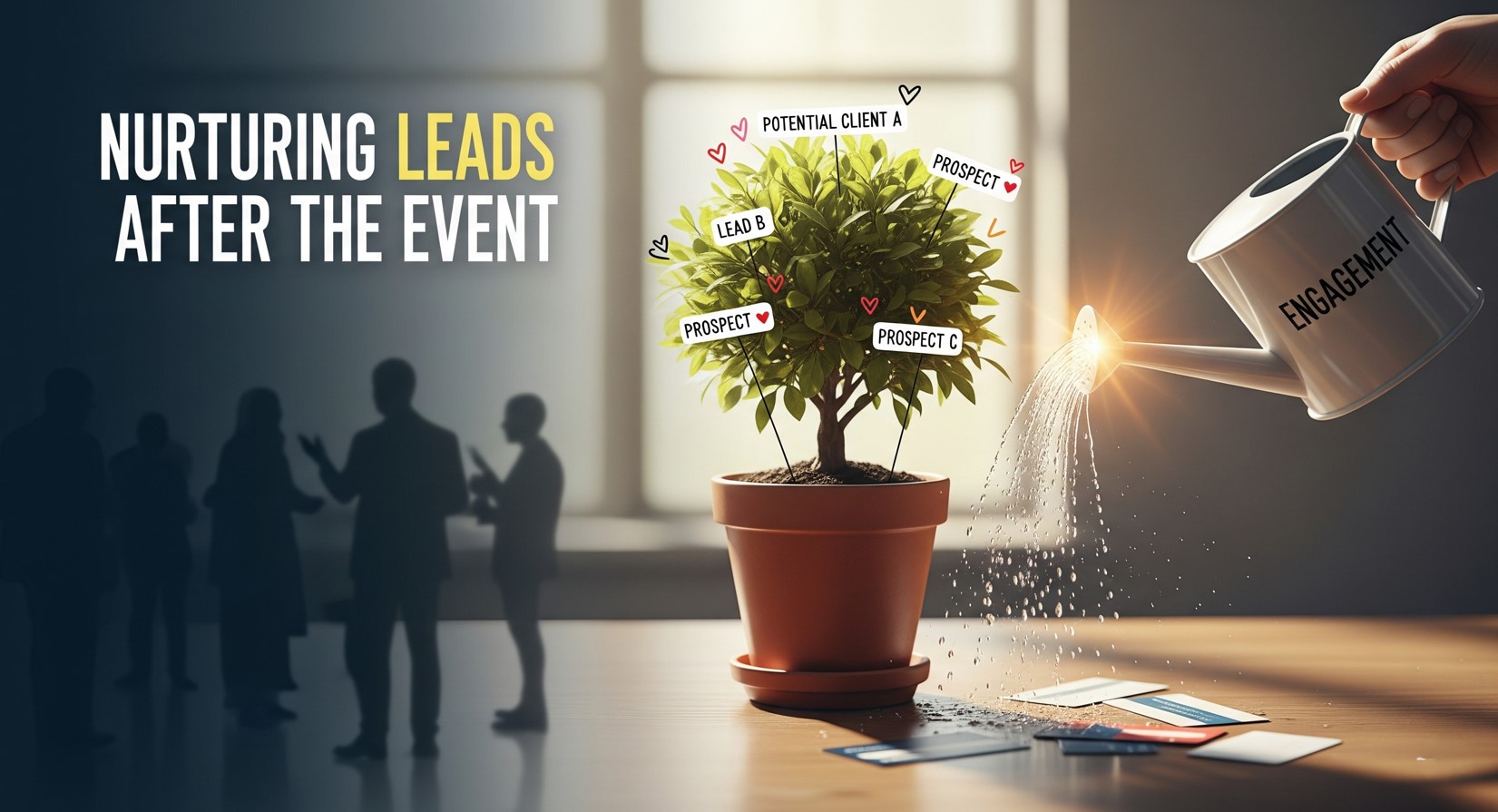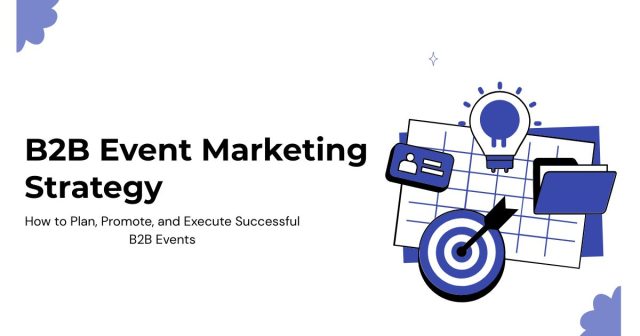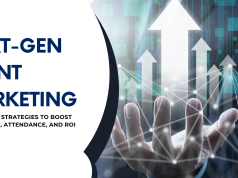Events have long been a cornerstone of B2B marketing, offering a unique opportunity to connect with potential clients, build relationships, and showcase industry expertise. While the landscape has evolved to include virtual and hybrid formats, the core goal remains the same: create memorable experiences that drive business growth. A well-executed event can generate high-quality leads, accelerate sales cycles, and build lasting brand loyalty.
However, simply showing up with a booth and some brochures is no longer enough. Success requires a sophisticated B2B event marketing strategy that aligns with your overall business objectives. This guide will walk you through the essential steps to plan, execute, and measure a powerful event marketing plan that delivers a strong return on investment. You’ll learn how to set clear goals, engage your audience before, during, and after the event, and use data to refine your approach for future success.
Defining Your Event Marketing Goals
Before you book a venue or design a landing page, you need to define what you want to achieve. Your goals will guide every decision you make, from the type of event you host to the metrics you track. Without clear objectives, it’s impossible to measure success or justify the investment.

Common B2B event marketing goals include:
- Lead Generation: This is often the primary goal. The aim is to collect contact information from qualified prospects who have shown interest in your products or services.
- Brand Awareness: If you’re a new company or entering a new market, your goal might be to increase your brand’s visibility and establish it as a credible player in the industry.
- Customer Engagement and Retention: Events are an excellent way to strengthen relationships with existing customers. You can use them to unveil new features, gather feedback, or simply show your appreciation for their loyalty.
- Sales Acceleration: An event can help move prospects through the sales funnel faster. By providing in-depth product demos and facilitating conversations with sales reps, you can shorten the time from initial contact to closing a deal.
- Thought Leadership: Hosting or speaking at an event can position your company and its executives as experts in your field, building trust and credibility with your target audience.
Once you have your primary goal, make it SMART: Specific, Measurable, Achievable, Relevant, and Time-bound. For example, instead of a vague goal like “generate leads,” a SMART goal would be: “Generate 50 marketing-qualified leads (MQLs) from our sponsored booth at the SaaS North Conference on October 25th.”
Crafting Your Pre-Event Strategy
The success of your event marketing often depends on the work you do before the event even starts. A strong pre-event strategy builds anticipation, drives registrations, and ensures you have a pipeline of interested attendees to engage with on the day.
Build Your Event Presence
Your event needs a digital home base. Create a dedicated landing page with all the essential information: what the event is about, who should attend, the date, time, location, and a clear call-to-action (CTA) to register. Use compelling copy and professional visuals that reflect your brand.
Promote Across Multiple Channels
Don’t rely on a single channel to get the word out. Implement a multi-channel promotional plan that includes:
- Email Marketing: Send a series of emails to your subscriber list, segmenting it to target the most relevant contacts. Announce the event, send reminders, and share sneak peeks of the content or speakers.
- Social Media: Create a unique hashtag for your event and promote it across your social channels. Share behind-the-scenes content, speaker quotes, and interactive posts like polls or Q&As to build excitement.
- Content Marketing: Write blog posts, create videos, or host webinars related to your event’s theme. This not only promotes the event but also provides value to your audience and positions you as an expert.
- Paid Advertising: Use targeted ads on platforms like LinkedIn to reach a specific audience based on job title, industry, or company size.
Engaging Attendees During the Event
On the day of the event, your focus should shift to creating an engaging and memorable experience for your attendees. Whether the event is in-person, virtual, or hybrid, the goal is to facilitate meaningful interactions that strengthen your brand’s connection with the audience.

For In-Person Events
At a physical event, your booth is your stage. Make it visually appealing and interactive. Instead of static displays, consider live product demos, interactive games, or a comfortable lounge area where people can chat with your team. Train your staff to be proactive, friendly, and knowledgeable. Their role isn’t just to scan badges but to have genuine conversations, understand attendees’ pain points, and identify potential leads.
For Virtual Events
Keeping a remote audience engaged requires creativity. Use a mix of formats like live Q&A sessions, polls, breakout rooms for smaller group discussions, and virtual networking lounges. Encourage participation through the chat and reward active attendees with small prizes or shout-outs. Ensure your technology is seamless and that you have technical support on hand to troubleshoot any issues.
Nurturing Leads After the Event
The work isn’t over when the event ends. In fact, the post-event phase is where you convert the interest you’ve generated into tangible business results. A prompt and personalized follow-up strategy is crucial for nurturing leads and maximizing your return on investment.

Segment and Personalize Your Follow-Up
Start by segmenting the leads you collected based on their level of interest and interactions during the event. Did they attend a product demo? Did they speak with a sales rep? Did they just scan their badge at your booth?
Tailor your follow-up messages based on this segmentation. A “hot” lead who showed strong buying intent should receive a personal email from a sales representative to schedule a meeting. A “warm” lead might be added to a drip campaign that provides more educational content. Avoid sending a generic “thanks for stopping by” email to everyone. Personalization shows that you were paying attention and value their time.
Measure and Analyze Your Results
Refer back to the SMART goals you set at the beginning. It’s time to measure your performance against them. Track key metrics such as:
- Number of registrations vs. actual attendees
- Number of leads generated
- Cost per lead
- Number of sales meetings booked
- Pipeline value generated from the event
Analyzing this data will help you understand what worked well and what could be improved. Share these insights with your team and stakeholders to demonstrate the value of your event marketing efforts and inform your strategy for the next one.
Frequently Asked Questions
What is B2B event marketing?
B2B event marketing is a strategy where businesses host, sponsor, or participate in events like conferences, trade shows, webinars, or workshops to engage with potential and existing customers. The primary goal is to generate leads, build brand awareness, and foster relationships within a professional context.
How do you measure the ROI of B2B event marketing?
To measure ROI, you need to track both the costs and the returns associated with the event. Costs include sponsorship fees, booth design, travel, and marketing expenses. Returns can be measured by the total value of the sales pipeline generated from event leads. The formula is: (Pipeline Value - Event Costs) / Event Costs. A positive ROI indicates that the event generated more potential revenue than it cost.
What are the key differences between in-person and virtual event marketing?
In-person events excel at fostering deep, personal connections through face-to-face interaction. The marketing focus is often on creating a compelling physical presence. Virtual events offer greater reach and accessibility, as attendees can join from anywhere. The marketing challenge for virtual events is to maintain engagement and create networking opportunities in a digital environment, which requires interactive platforms and dynamic content.
Drive Your Growth with Strategic Events
A powerful B2B event marketing strategy is about more than just showing up. It’s a comprehensive process of planning, promotion, execution, and follow-up, all tied to clear business objectives. By defining your goals, engaging your audience at every stage, and diligently measuring your results, you can transform events from a costly expense into a powerful engine for lead generation and business growth. Start by planning your next event with these principles in mind, and you’ll be on your way to creating experiences that resonate with your audience and deliver real, measurable value.









